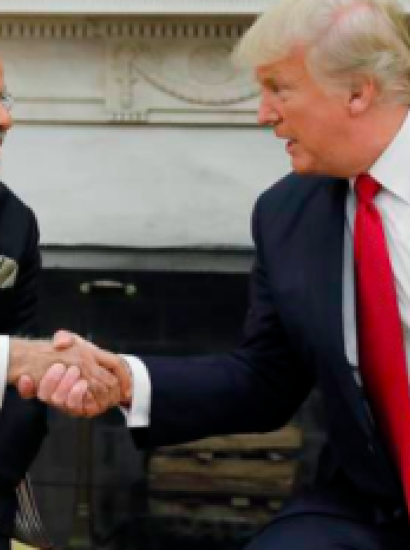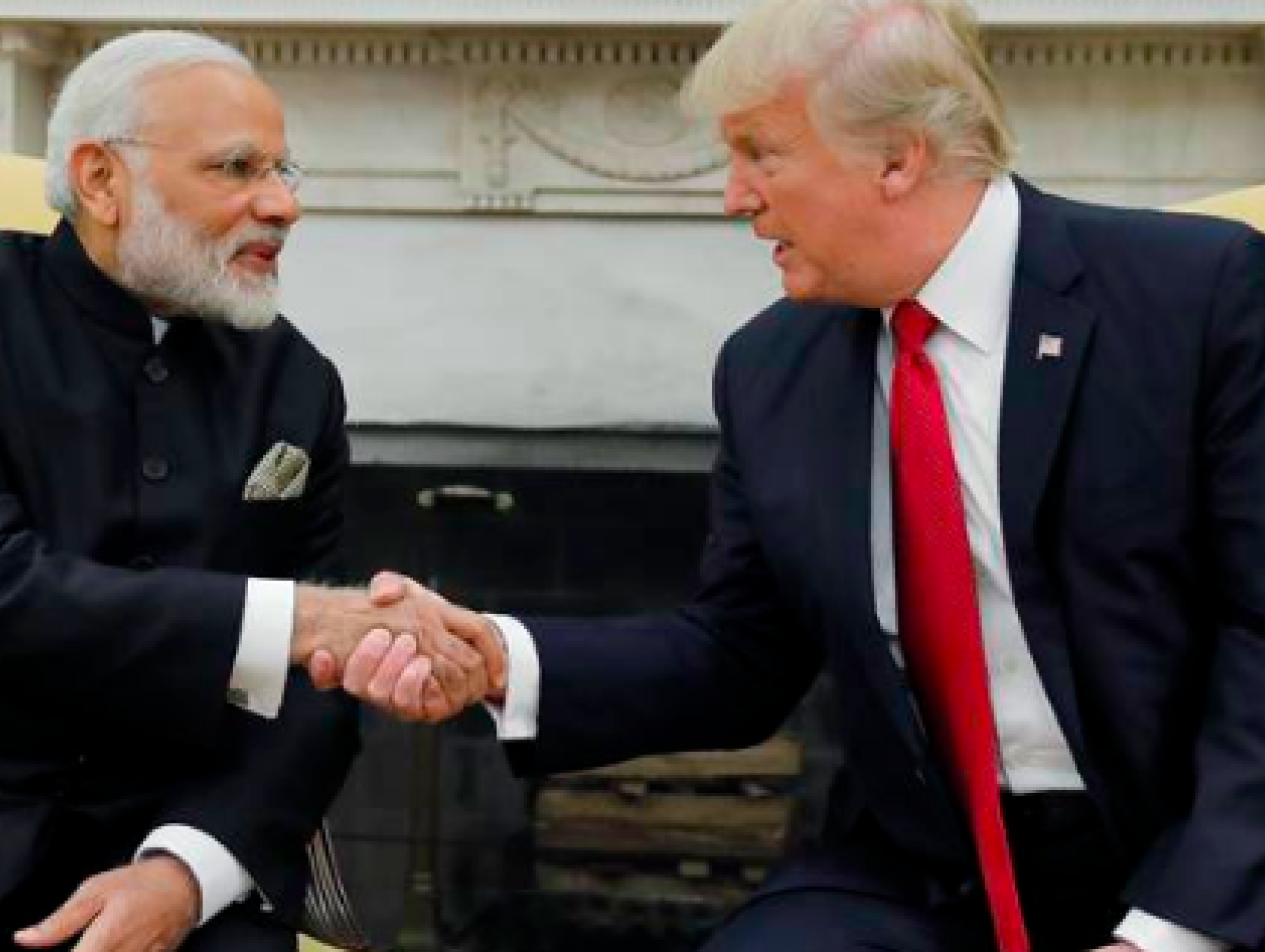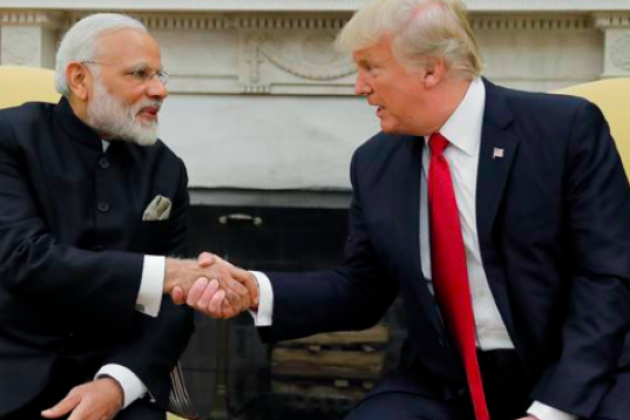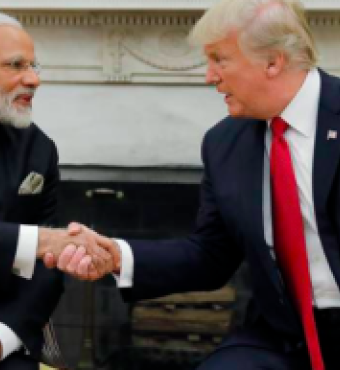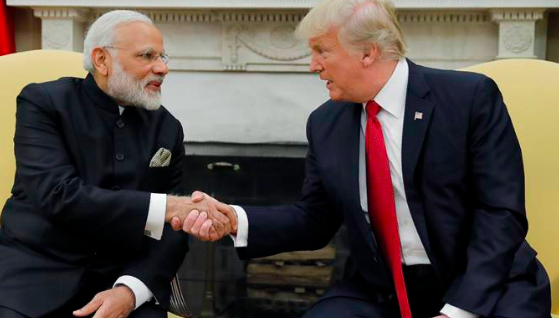We are faced today with numerous global challenges, many extremely dangerous because they are set within the context of a changing world order. Evidence of evolution and uncertainty is all around us. After decades of leading and shaping the world which emerged from World War II, the US must now face the results of this transformation.
The list is long and demanding for US leadership. It includes lingering damage from the economic and financial crisis of 2008; the failure of the US, Europe and Japan for over a decade to restore strong economic growth; the rise of China with its ambitions in south/central Asia and the Pacific; geopolitical transformations in North Korea and the Middle East; a more aggressive Russia and Iran; changing demographic patterns and disruptive migratory movements that are imposing greater diversity and new governance challenges for national governments; and finally, new and rapidly evolving technologies that are affecting every facet of life. Nationalism and populism are on the rise, globalization is in retreat, and pre-crisis alignments are under stress in every region. There is an urgent need for new leadership around the globe, for better understanding, and fresh ideas.
Among the new global realities is the rise of India. Few American political leaders understand the magnitude and meaning of India’s current transformation, or the unique social and economic ethos which continues to inform and influence India’s view of itself in the modern world. If the United States believes in American exceptionalism, one must recognize that India’s perceived exceptionalism is similarly present among Indians, reflecting its modern development as well as the durability over centuries of India’s culture in the sub-continent.
This is important today because India’s time is coming. India’s recent growth has been a stunning accomplishment. Growth exploded in 2003 when India began its breakout to sustained annual growth well above 5%, a level it has sustained at between 5.5% and 10% over the past 15 years. This was utterly new for India. In the nearly 60 years following independence in 1947, India was unable to sustain growth above a range of 2% to 4%. Now India is the leading performer among major emerging countries.
But growth is only part of India’s story. Social and economic transformation are being embraced with growing confidence and rising aspirations. Technology is being deployed with remarkable speed, often less hindered by India’s lack of modern infrastructure. When one bears in mind India’s vast size, its remarkable diversity and large young population, the comfort of its young people with technology and the English language – all set in a free and genuine democracy - one can easily grasp the profound importance of India for Asia and the present and future national interests of the United States.
Both the current government led by Prime Minister Narendra Modi and the previous administration of Prime Minister Manmohan Singh accomplished important reforms central to India’s future development. A project sponsored and supported by both governments, India’s biometric ID card program, is having a striking impact on all aspects of Indian life. Some 85% of India’s 1.3 billion population now have, and use, the ID card for a multitude of purposes: opening bank accounts (now running in the hundreds of millions in three years); accessing the internet (again, running in the hundreds of millions in three years); transferring funds electronically, for most people a new experience; receiving government subsidies directly by electronic transfer; conducting commercial and private transactions of all kinds where access and identification are required, as is the case for voter identification and many other purposes.
India’s new, comprehensive goods and services tax, enacted after decades of fruitless debate, is bringing India’s vast economy for the first time into a single national market. This vital reform will result in stronger GDP growth and improved tax compliance in coming years.
Prime Minister Modi is pressing on many fronts towards wider use of online commerce and his dream of a paperless financial and services economy. Early in his first term Mr. Modi abolished India’s longstanding Soviet-style Planning Commission, sending the message that the era of a socialist state-run economy is over. New resources are being directed by the central government to India’s many states, now under new, younger political leaders, enabling them to address challenges that are state responsibilities under India’s Constitution and encouraging states to compete more aggressively for investment and growth.
India today is benefitting from sounder macro-economic policies. India remains the emerging country least dependent on the broad external international economy. It has achieved lower inflation, stronger fiscal balances and relatively low dependence on external debt, with ample capacity to expand domestic credit to support India’s continued growth.
In 2005, the United States initiated a radically new direction in its relations with India. The centerpiece was the US-India Civil Nuclear Agreement, which, when signed in 2008, established India’s full access to global civil nuclear technology after 30 years of isolation. India had refused to sign the 1974 nuclear non-proliferation treaty, which would have required India to give up the nuclear weapons it developed on its own as a defense against nuclear neighbors, China and Pakistan.
As part of the new agreement, India accepted IAEA nuclear safeguards on its nuclear industry. It also agreed to separate its strategic nuclear program from its civil nuclear industry and to comply with the disciplines of the 1974 treaty. In short, India joined the world’s nuclear non- proliferation architecture, and equally important, the nearly four-year negotiation established an entirely new level of respect and trust between the United States and India.
Today our two great democracies have an extraordinary opportunity to deepen and diversify their economic and trade relationship and to build on their joint Indo-Pacific initiatives. Both governments need to think big again, as they did in 2005 when they launched the civil nuclear negotiations. We need to recognize that the shared interests of the United States and India have converged significantly in the past decade. It is time for more comprehensive engagement with a new and distinctly different vision for the next ten years and beyond.
In framing this vision, the U.S. and India should make clear in the Indo- Pacific context that their objective is not to create an alliance to contain China. Rather, their focus would be on recognizing and building on existing shared interests and the impressive convergence of their economies over the past decade.
The Trump administration has advertised its opposition to complex multilateral trade and investment agreements which are judged to be burdensome, unfair and inadequately serve our more narrowly defined national interests. The new administration espouses bilateral trade and investment initiatives that they believe will better serve more targeted US interests. Unfortunately, their track record with initiatives of this more type is non-existent at this point. U.S. trade policy towards China is presently centered on imposing tariffs, countering dumping and attacking existing intellectual property abuses. Even renegotiating NAFTA after nearly 25 years with only two of our main trading partners is proving to be a possibly unachievable challenge.
Better with India to start with a clean slate, and to target engagement on those specific sectors where the most can be achieved by both partners. The objective would be to avoid being captured in the embrace of overambitious objectives, or constrained by trying to negotiate a broad trade and investment framework aimed at covering the whole economy. Such limitations do not exist today in this form in India.
Instead, the United States and India share the advantage of being able to design their own unique and targeted way forward. There is, for example, successful historic precedent for this approach, established in the 1980s by President Reagan. In 1984 the President launched the Yen/Dollar negotiations with Japan which were focused exclusively on Japan’s highly restricted financial sector at that time. The objectives were to achieve broader international use of the yen for trade and financial transactions, more open access to Japan’s restricted domestic capital markets for foreign banks and financial firms, a more diverse array of yen-denominated financial instruments for Japanese investors that would contribute over time to higher investment growth in Japan, and helping to generate a stronger Japanese Yen in global markets. These talks continued for many years and marked the beginning of the follow-on U.S.-Japan sectoral trade negotiations on selected products. These two targeted initiatives significantly transformed Japan-U.S. trade and investment relations for many years.
In both India and the U.S. today there are strong and visionary leaders who can design and push forward a targeted selection of sectoral negotiations in strategic areas. Large-scale investment with India in its national defense industry offers a rich field for cooperation with benefits flowing to both countries. Joint-venture-based defense production between our two private sectors could bring welcome growth and jobs to our respective economies. India has the world’s third largest standing military and has been the world’s largest importer of military equipment drawn from a variety of different country sources. India is now pursuing its new vision of building its own national defense industry. More frequent joint military exercises between India, the US, Japan and Australia point towards wider military cooperation, increasing joint interoperability and standardization of weapons system.
Energy (gas, oil, solar and nuclear) offers another field of opportunity where negotiated deals can generate large-scale investment with benefits for both our economies. If India seeks to rise to one of the world’s top economies, it must dramatically scale up its energy capacity from all sources, which will require major investment from offshore.
The list of potential target areas is lengthy with many opportunities for joint-venture operations that bring benefits to both sides. These include high-tech research in the most advanced fields, e-commerce, health care, the testing of new drugs (resulting in cheaper drugs) and advanced treatments in life sciences, agriculture, water management and some consumer products.
Heads of Government, supported by Cabinet level officials to carry negotiations forward, should be able to formulate and provide leadership for a targeted trade and investment strategy that, if pursued, will deepen relations and produce growth and jobs in both countries. Once top leaders in both governments in effect set the broad rules of engagement and remove the myriad of restrictions in both countries that restrict progress, it will be principally private sector players doing deals that will carry forward the challenges of execution and implementation.
Fortunately, there is long experience between the U.S. and India of initiatives being led by our respective private sectors and civil societies, who over the years have run well ahead of the official bilateral relationship. There are well over one million NGOs active in India today, many supported from the United States. India is becoming the “start-up” capital of the world. There is support, experienced Indian and American leadership in US business today and capital available from India and America’s highly successful Indian community. There is widening understanding in the US business community of the potential magnitude of investment opportunities in India as witnessed by the recent decision of Walmart to invest $16 billion in e-commerce in India with Flipkart, a company founded in India. There is also the past experience of the US-India CEO Forum founded in 2005 and operated by private sector companies which opened the way to improved consistent dialogue with the Government of India. Finally, we should remember that a significant contribution was made by Indian Americans to the lobbying effort in America that helped bring about the change in US law required to complete the US-India civil nuclear agreement in 2008. Their constructive influence should be valued and called upon again in the future.
Sustained growth and continuing rapid transformation will permit India to claim a stronger leadership role on the world stage. This will require from India further economic and financial liberalization, recognition of the need for reducing tariffs, speeding up and further clarifying FDI rules and procedures and ensuring strong intellectual property protection. India’s expanded vision of its traditional economic and diplomatic policies is already underway in the Modi government and should be encouraged.
For the United States we need to accept, despite the absence of a formal US-India alliance today, that a country we trusted and for which we changed our law to be admitted to the world’s civil nuclear community should enjoy our full confidence. This is essential for resolving security issues relating to high tech trade, energy initiatives and defense cooperation. The US should commit to not raise or impose punitive tariffs on India, revise and relax its restrictions on sensitive high-end technology and defense products and agree to produce sensible and sustainable arrangements regarding the issue of H1B visas to Indian nationals, whose positive track record as contributors to American society and the US economy has been clearly established. Finally, both countries should agree in principle on the need to maintain credible procedures for the prompt resolution or arbitration of disputes and the interpretation of understandings established in the course of business. Rule of law and sanctity of contract needs to be clear and enforceable in courts.
Given current resistance to complex multilateral trade and investment agreements and the absence with India of a broad, formal trade agreement, the United States should take a more nuanced and narrowly focused approach with India. This approach would be driven by concentration on business deals in sectors of particular interest to both countries which, when accomplished, would create a track record of success and a base for further progress. The measure of success would be results that serve narrowly defined objectives and provide identifiable benefits to both economies. Initial engagement and broad vision would be set by top national leaders. Execution and implementation would be the responsibility of private business leaders working in coordination with government officials under the broad rules set by leaders to close the deals put up for negotiation.
The United States and India are both large, well-established democracies of great diversity. Both have evolved successfully in the face of change, finding practical solutions to their many challenges. In US-India economic and trade relations, this speaks in favor of negotiating specific opportunities that are doable now and establish results that are seen by our respective citizens to be credible, beneficial and sustainable. Moreover, deals can be kept under review by top leaders in our administrations, including Heads of Government. It also speaks in favor of a relationship that can evolve towards wider opportunities and eventually, perhaps, to the world’s largest bilateral trade and investment agreement.









